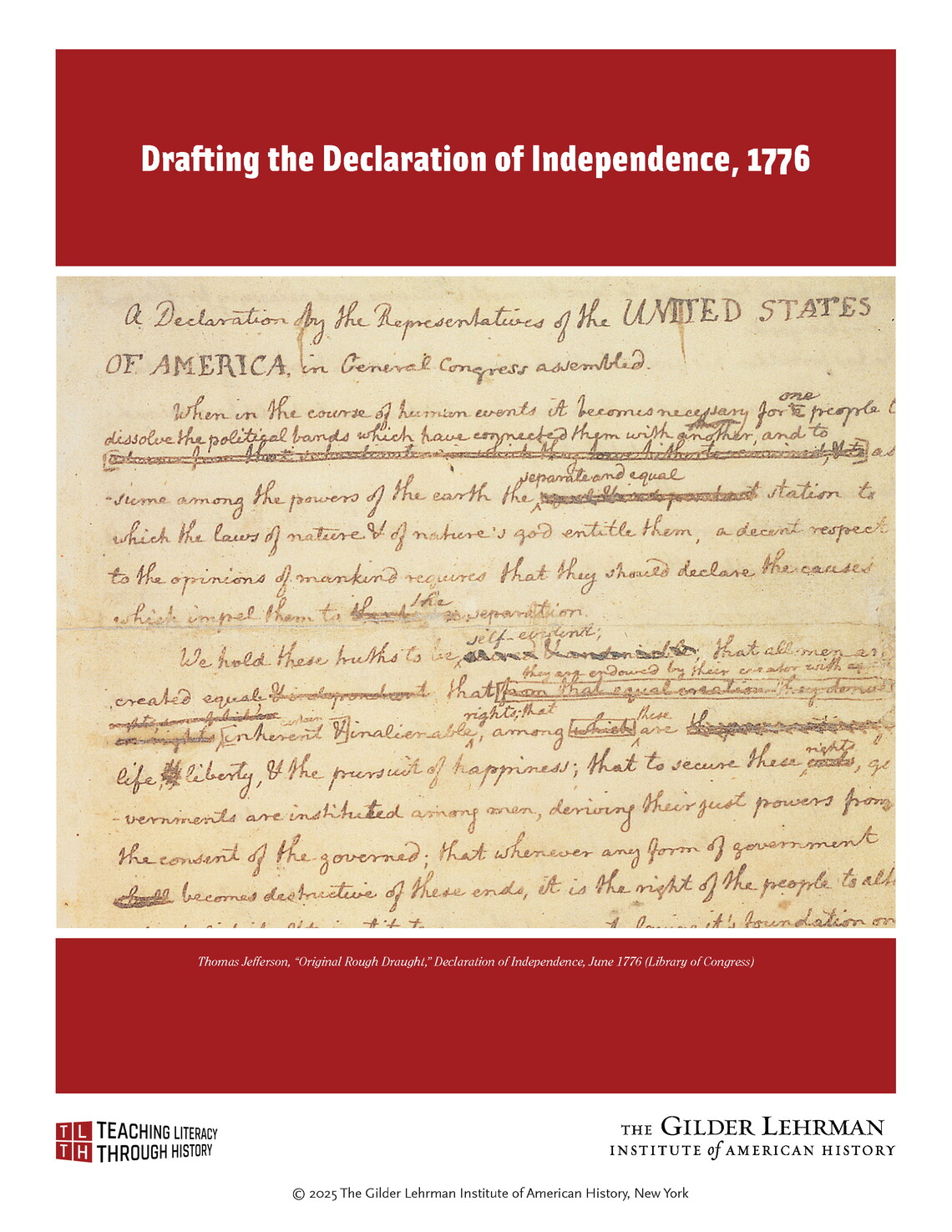Lesson by Nathan McAlister
Essay by Katlyn Marie Carter, University of Notre Dame
Grade Level: 7–12
Number of Class Periods: One to two 45-minute class periods
Primary Era: The Founding Era

This unit is one of the Gilder Lehrman Institute’s Teaching Literacy through History™ (TLTH) resources, designed to align with the Common Core State Standards. Students will learn and practice skills that will help them analyze, assess, and develop knowledgeable and well-reasoned points of view on primary source materials. These skills will enable students to understand, summarize, and evaluate documents of historical significance.
This lesson explores two versions of the Declaration of Independence, a draft and the final printed document. Students will also read an essay by a historian about Thomas Jefferson, the Continental Congress, and the drafting process. You will assess students’ understanding through activity sheets and a student presentation.
Lesson Plan Author: Nathan McAlister
Historical Background Essay by Katlyn Marie Carter, University of Notre Dame
CCSS.ELA-LITERACY.RH.6-8.1: Cite specific textual evidence to support analysis of primary and secondary sources.
CCSS.ELA-LITERACY.RH.6-8.2: Determine the central ideas or information of a primary or secondary source; provide an accurate summary of the source distinct from prior knowledge or opinions.
CCSS.ELA-LITERACY.RH.6-8.4: Determine the meaning of words and phrases as they are used in a text, including vocabulary specific to domains related to history/social studies.
CCSS.ELA-LITERACY.RH.6-8.5: Describe how a text presents information (e.g., sequentially, comparatively, causally).
CCSS.ELA-LITERACY.RH.9-10.5: Analyze how a text uses structure to emphasize key points or advance an explanation or analysis.
CCSS.ELA-LITERACY.RH.9-10.9: Compare and contrast treatments of the same topic in several primary and secondary
sources.
CCSS.ELA-LITERACY.RH.11-12.2: Determine the central ideas or information of a primary or secondary source; provide an accurate summary that makes clear the relationships among the key details and ideas.
CCSS.ELA-LITERACY.RH.11-12.4: Determine the meaning of words and phrases as they are used in a text, including analyzing how an author uses and refines the meaning of a key term over the course of a text (e.g., how Madison defines faction in Federalist No. 10).
CCSS.ELA-LITERACY.RH.11-12.5: Analyze in detail how a complex primary source is structured, including how key sentences, paragraphs, and larger portions of the text contribute to the whole.
What process resulted in the Declaration of Independence?
How did the final draft of the Declaration of Independence differ from early drafts?
Thomas Jefferson, “Original Rough Draught,” Declaration of Independence, June 1776, with transcription of crossed-out text by Julian Boyd, ed., The Papers of Thomas Jefferson, vol. 1, 1760–1776 (Princeton: Princeton University Press, 1950), 243–247
Continental Congress, Declaration of Independence, printed by John Dunlap, Philadelphia, July 4/5, 1776, National Archives, catalog.archives.gov/id/301682